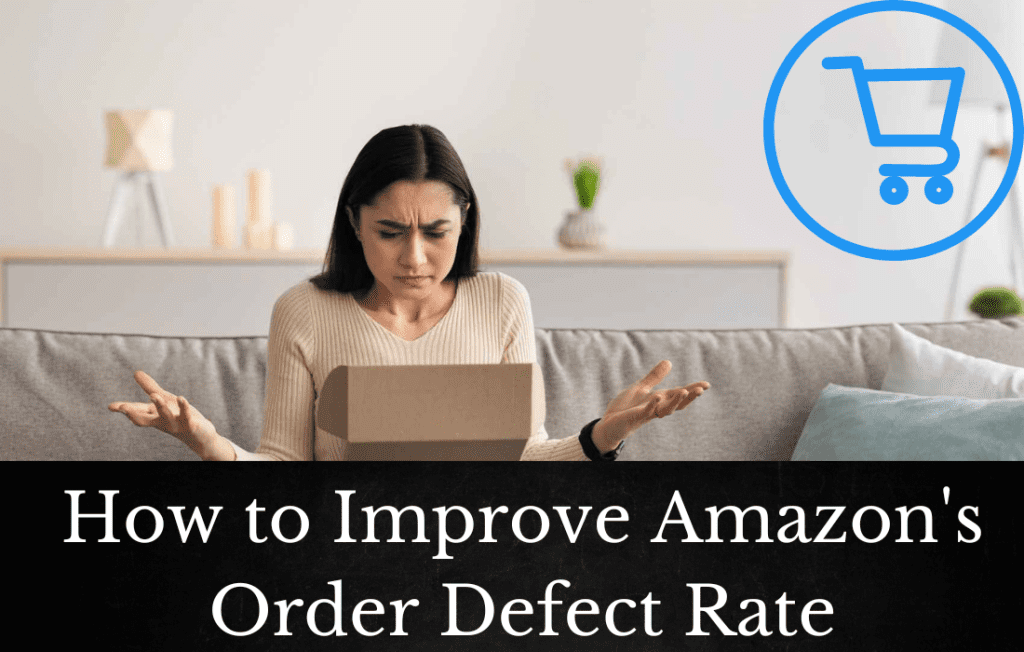In Today’s Fast Paced world of e-commerce, it’s crucial to maintain a high level of customer satisfaction to succeed.
One of the Most Important metrics that sellers must monitor to gauge their performance is Amazon’s Order Defect Rate (ODR). Amazon’s ODR measures the percentage of orders returned due to defects, such as incorrect items, missing items, or damaged items.
This guide will provide a comprehensive overview of Amazon Order Defect Rate. We’ll discuss the factors that contribute to a high ODR and provide tips on how to improve it.
This guide will help you understand and improve your Amazon Order Defect Rate, ensuring that your customers receive the best possible experience when shopping with you.
What is Amazon Order Defect Rate (ODR)?
Amazon’s Order Defect Rate is a metric used by Amazon to measure the quality of customer service provided by a seller. It represents the percentage of orders placed on Amazon that are identified as having issues or defects.
The issues may include product complaints, late shipments, negative feedback, or A-to-Z guarantee claims.
ODR provides valuable insight into how well a seller is managing their business and delivering a positive customer experience.
A low ODR indicates that a seller is providing high-quality products and reliable shipping, which results in a high level of customer satisfaction.
On the other hand, a high ODR suggests that a seller may have room for improvement in terms of product quality, shipping speed, and overall customer service.
It is important for a seller to have a low ODR as it affects their performance and reputation on Amazon.
A high ODR can negatively impact a seller’s ranking, visibility, and credibility, making it harder for them to attract new customers and retain existing ones.
In order to maintain a successful business on Amazon, it is essential to monitor and strive to maintain a low ODR.
How to Calculate The Amazon Order Defect Rate
Calculating the Amazon Order Defect Rate (ODR) is an important step in measuring the quality of customer service provided by a seller on the Amazon marketplace. The formula for calculating ODR is as follows:
ODR = (Number of Orders with a Defect) / (Total Number of Orders) * 100
Where a defect can refer to negative feedback, A-to-Z Guarantee claims, and service chargebacks received from customers.
For example, if a seller receives 10 negative feedbacks, 5 A-to-Z Guarantee claims, and 2 service chargebacks out of 100 total orders, the ODR calculation would be:
ODR = (10 + 5 + 2) / 100 * 100 = 17%
It is important to strive for a low ODR, as a high ODR can negatively impact a seller’s performance and standing on the Amazon marketplace.
How to Monitor Your Amazon Order Defect Rate
Amazon Order Defect Rate (ODR) is an important metric that measures the quality of customer service provided by a seller on the Amazon marketplace. Here are step-by-step instructions for monitoring your ODR:
- Log in to your Amazon seller account.
- Navigate to the “Reports” section of your account and select the “Performance Reports” option.
- Find the “Order Defect Rate Report” and select it.
- Review the data and check if your ODR is within the acceptable range set by Amazon.
If your ODR is higher than the acceptable range, take corrective action to improve your customer service. This may include addressing any customer complaints or improving your order fulfillment process.
What Happens When Your Amazon Order Defect Rate Reaches Above 1%?
When a seller’s Amazon Order Defect Rate (ODR) exceeds 1%, it is considered an indication of poor customer service.
The high ODR reflects a high rate of customer complaints, returns, or negative feedback, which can negatively impact a seller’s account standing and visibility on Amazon.
The consequences for the seller include loss of visibility in the Amazon search results, decreased sales, and potential suspension of their selling privileges.
To avoid these consequences, sellers must take steps to lower their ODR. This can include improving the quality of product descriptions and images, improving the packing and shipping process, and resolving customer complaints in a timely manner.
Amazon takes measures to protect the customer experience by closely monitoring ODR. If a seller’s ODR exceeds 1%, Amazon may take action such as disabling their Buy Box, reducing the visibility of their products in search results, or even suspending their account.
Factors That Make Your Order Defective on Amazon
The Amazon Order Defect Rate (ODR) is an important metric that measures the quality of customer service provided by sellers on the platform.
If the ODR exceeds 1%, it can result in consequences for the seller, such as account suspension, restrictions on account activities, or even removal of the seller account. To maintain a low ODR, it is important to understand what makes an order defective on Amazon.
Credit Card Chargeback:
This occurs when a customer disputes a charge on their credit card and asks the bank to reverse the transaction. This is a common issue when the customer is not satisfied with the product they received.
Missing Items:
If an item is missing from the order, it is considered defective. This can be due to shipping errors, incorrect packing, or product shortages.
Incorrect Items:
If the customer receives a different product from the one they ordered, it is considered defective. This can be due to shipping errors, incorrect labeling, or simply an error in the order fulfillment process.
Damaged Items:
If the customer receives a product that is damaged, it is considered defective. This can be due to shipping errors, incorrect packing, or product defects.
Late Shipments:
If the customer receives their order after the estimated delivery date, it is considered defective. This can be due to shipping delays, incorrect shipping information, or other issues in the shipping process.
How to Improve Your Amazon Order Defect Rate
Here are some ways to improve your Amazon Order Defect Rate:
Timely Processing and Shipping:
It’s important to process and ship orders quickly and efficiently to reduce the risk of late deliveries and other defects.
Top-notch Customer Service:
Providing excellent customer service can help prevent issues that could lead to defects, such as incorrect orders or damaged items. Respond promptly to customer inquiries and concerns to show them that you value their business.
Addressing Customer Concerns Promptly:
If a customer raises a concern about an order, address it quickly and professionally to prevent the issue from escalating and potentially leading to a defect.
Monitoring Customer Feedback:
Regularly monitoring customer feedback can help you identify areas where you can improve your process and reduce defects.
Other Potential Ways to Improve ODR:
Other potential ways to improve your ODR include improving your packaging and labeling, implementing an order management system, and training your staff on best practices for order fulfillment.
By focusing on these key areas, you can work to improve your ODR and maintain a high level of customer satisfaction on Amazon.
Conclusion
In conclusion, the Amazon Order Defect Rate (ODR) is an important metric for sellers on the platform, as it measures the quality of customer service and can have consequences for those with high rates.
By understanding and optimizing ODR, sellers can maintain high levels of customer satisfaction and success on the Amazon platform.
Michael C Vang is a passionate blogger. He has been blogging since 2013 on a variety of topics. He is committed to creating informative and engaging content that helps readers learn more about everything.



